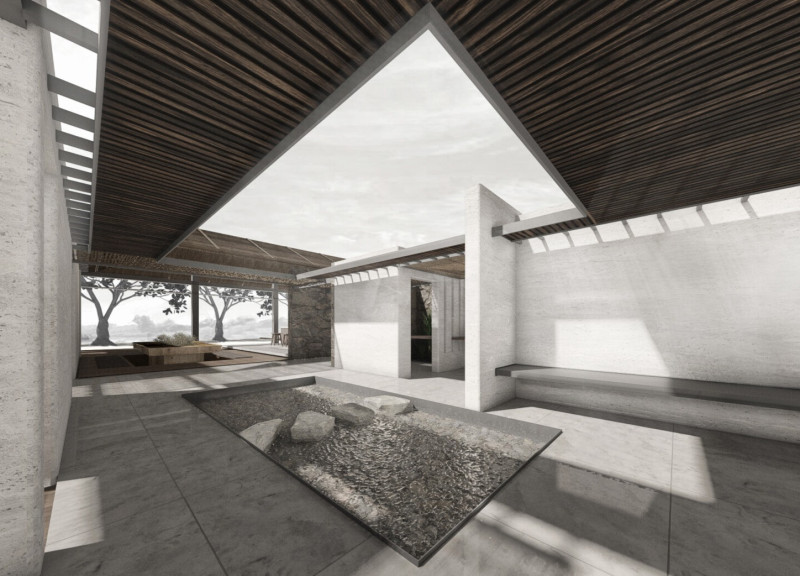5 key facts about this project
At the core of this project is the concept of connectivity, both within the building and between the building and its environment. This is visually articulated through open spatial layouts that encourage movement and interaction among occupants. The design emphasizes natural light, utilizing large windows and strategically placed skylights that illuminate the interior spaces while offering views of the exterior landscape. The flowing transitions between indoor and outdoor areas foster a sense of harmony and well-being.
The architectural elements are meticulously crafted to emphasize both aesthetics and longevity. A selection of durable materials forms the backbone of the design, showcasing a blend of natural and modern components. Materials used include reinforced concrete, which provides structural integrity; sustainably sourced timber, which adds warmth and a tactile quality; and expansive glass panels, allowing for transparency and visual fluidity. This thoughtful materiality not only contributes to the overall visual appeal of the project but also aligns with sustainability goals, minimizing environmental impact while maximizing energy efficiency.
Unique to this project is its attention to local cultural elements, which has been woven into the design language. Traditional motifs or patterns may be subtly integrated into contemporary forms, creating a dialogue between the past and present. This approach not only honors the heritage of the location but also engages the community, inviting them to see their narratives reflected in the architecture.
The functional aspects of the project are equally considered, with spaces defined for various uses such as collaboration, recreation, and social interaction. The design accommodates flexibility, allowing spaces to be adapted as needs evolve over time. This responsiveness is a crucial element that sets the project apart, demonstrating a forward-thinking approach to architectural design. Common areas encourage collective engagement, while quieter zones provide respite, ensuring that the building meets diverse requirements.
Landscaping plays an essential role in enhancing the overall experience of the project. The integration of green spaces not only serves aesthetic purposes but also improves air quality and promotes biodiversity. Outdoor areas are designed for accessibility, encouraging outdoor activities and bringing the natural environment closer to the users.
This architectural endeavor represents a significant accomplishment in modern design, establishing a balance between innovative ideas and practical application. The result is a space that is not only visually appealing but functional, comfortable, and sustainable.
For those intrigued by the intricacies of this project, a closer examination of the architectural plans, architectural sections, and architectural designs is recommended. These elements will provide deeper insights into the thought processes and design strategies that shaped this unique architectural work. Exploring these details can enrich your understanding of the project's contributions to both architecture and its community.























